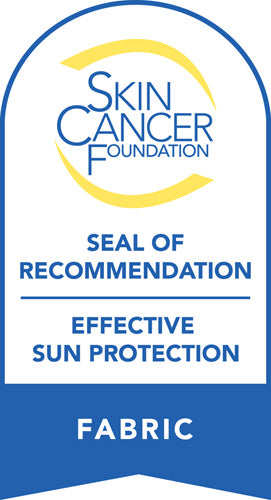Melanoma Awareness
Melanoma is one of the most serious types of skin cancer. This article seeks to spread melanoma awareness and information about this type of cancer.
According to the American Cancer Society (ACS), about 99,780 new melanomas will be diagnosed by 2022. With 7,650 people expected to die from melanoma.
Unfortunately, melanoma rates continue to rise despite readily available information. As one of the most severe types of skin cancer, melanoma awareness is more critical than ever.
With summer approaching, the threat of melanoma is rapidly increasing.
Learn more about the symptoms, risk factors, warning signs, and treatment in this informative guide to melanoma.
What Is Melanoma?
Melanoma is a skin cancer that develops in the skin's pigment cells, known as melanocytes. It grows quickly via the blood and lymphatic system and can spread to any organ, including the lungs, liver, and brain.
Melanoma most commonly begins in the skin, but it can also develop on your eyes and internal organs. Melanomas can be brown, black, or tan shades but can be pink or even white.
There are four types of melanoma:
- Superficial spreading melanoma
- Lentigo maligna
- Acral lentiginous melanoma
- Nodular melanoma
Superficial spreading melanoma is the most common form. It can appear in an existing mole or as a new mole. Lentigo maligna often develops in older people and can appear on sun-damaged skin on the face, ears, arms, or back.
Caught early, melanoma is highly treatable. However, left undetected, melanoma can spread quickly and require treatments like chemotherapy. In some cases, even chemotherapy might not be enough.
Other Types of Skin Cancer
There are three other main types of skin cancer. Some are more common and easily treatable, while others are more serious and require chemotherapy and radiation.
They include basal cell carcinoma (BCC), squamous cell carcinoma (SCC), and Merkel cell carcinoma (MCC).
Basal cell carcinoma is the most common type of skin cancer. They most often develop on the head and neck, although they can be found anywhere on the skin. It is slow-growing and tends not to spread.
Squamous cell carcinoma is the second most common form of skin cancer. It is usually seen on sun-exposed areas, such as the head, hands, and neck.
Merkel cell carcinoma is a very rare cancer that can be fatal. It occurs more commonly in people with frequent UV light exposure.
Symptoms of Melanoma
More often than not, melanoma has no symptoms. However, the first visible sign is the appearance of a mole or change in an existing one. These changes include:
- Color
- Size
- Shape
- Elevation
- Itching or bleeding
To help you identify an unusual mole, think of the letters ABCDE:
- A is for asymmetrical
- B is for irregular border
- C is for changes in color
- D is for diameter
- E is for evolving
Some melanomas are easier to identify than others. Hidden melanomas can develop on areas of your body that have had little to no sun exposure. This can include spaces between your toes, palms, scalp, and genitals.
People with darker skin are more likely to have hidden melanomas.
When it comes to melanoma, there is no time to wait. See your doctor as soon as you notice any changes to your skin.
Risk Factors
People are more susceptible to melanoma than others. Here are the following factors that may increase your risk of melanoma:
- Fair skin
- History of sunburn
- Excessive UV light exposure
- Living closer to the equator
- Having many moles (more than 50)
- Family history of melanoma
- Weakened immune system
Those who spend all or part of the day working outdoors are among the highest risk groups for skin cancer. They require protection from UV all year-round, including during winter.
Treatment for Melanoma
During its early stages, melanoma can be successfully treated. The most common treatment for melanoma is surgical removal.
The extent of the surgery depends on the thickness of the melanoma and its circumference. For people with early-stage melanomas, this may be all the treatment that is needed.
If the melanoma has spread beyond the skin, treatment may include:
- Surgery to remove affected lymph nodes
- Immunotherapy
- Targeted therapy
- Radiation therapy
- Chemotherapy
After you finish treatment, you will need thorough check-ups – every 3 to 12 months for the first five years. If you have advanced melanoma, you will need to get chest x-rays or MRIs to locate any cancer that has returned or spread.
Preventing Skin Cancer
To lower your risk of getting skin cancer, you can protect your skin by limiting your sun exposure and wearing UPF clothing. In addition, you can:
- Avoid the sun during the middle of the day
- Wear sunscreen year-round
- Wear protection clothing
- Avoid tanning lamps and beds
- Do regular skin checks
It is recommended that adults do a skin self-exam every three months. People at an elevated risk should make it a habit to visit a skin cancer clinic once a year.
When you complete a melanoma skin self-exam, take note of existing moles and whether you notice any changes. As a rule of thumb, when you're in doubt, get it checked out.
Tips for Staying Sun Safe
As we approach the warmer months, it's important to keep your skin's health at the front of your mind. While we want you to enjoy the outdoors, we also want you to do it safely.
Here are some top tips to stay safe in the sun:
- Wear protective clothing that covers your skin
- Apply sunscreen liberally (make sure it's at least SPF 30)
- Wear a broad-rimmed hat
- Choose shade over full sun whenever you can
- Wear sunglasses to protect your eyes
Taking simple sun safety precautions minimizes the risk of sun exposure while still being able to enjoy the outdoors.
Melanoma Awareness: Prevention and Early Detection
When found early, melanoma can be treated and cured. That's why melanoma awareness is so important.
By sharing facts about the dangers of skin cancer, you can encourage others (and yourself) to check their skin for warning signs.
BloqUV can help you protect yourself from UV with our range of multifunctional UPF 50+ protection garments. Our sun protective apparel can be used for tennis, golf, swimming, hiking, running, and any other outdoor activity you can imagine.
Our BloqUV products provide UV protection and block 98% of the sun's rays (UVA and UVB). And don't worry, the UV protection won't wash away during your weekly laundry wash.
Check out our activewear range and stay sun smart this summer!



